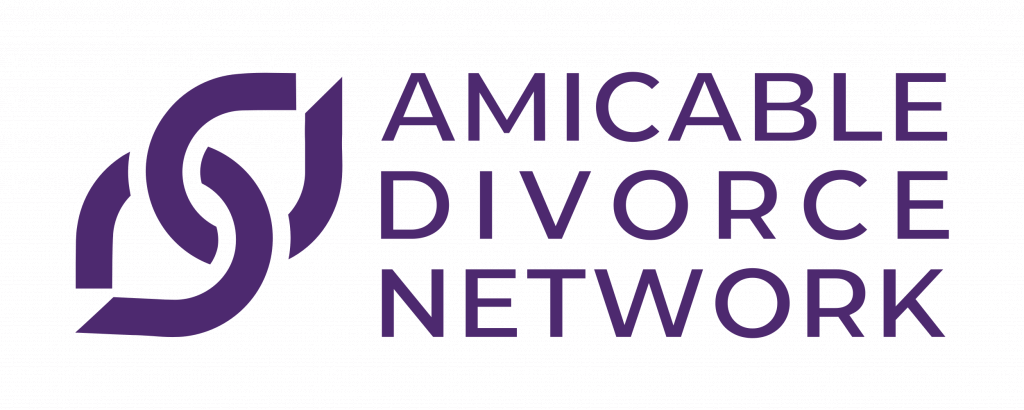The Amicable Divorce Network : another option for low conflict divorce
By Andrew Hatherley, CDFA®

Recently, I joined the Amicable Divorce Network (ADN) as a founding member for the State of Nevada. The ADN is an international network of vetted professionals committed to helping parties through the divorce process in a low conflict and efficient manner. Differing from collaborative divorce in several important ways, the organization was created by family law attorney Tracy Moore -Grant in 2019 and has grown from a Metro Atlanta divorce organization to a global network and technology platform.
The network consists of attorneys, mediators, mental health professionals, financial professionals, mortgage and real estate professionals, and wellness professionals. The common thread these professionals share is a commitment to a low conflict mindset in divorce.
Moore-Grant attributes the positive reception of the ADN to this common goal. “I think professionals who are truly interested in helping people naturally gravitate to our organization and find it to be the perfect fit. Our members enjoy being part of a group of peers who are dedicated to helping people divorce in a healthy manner.” Moore-Grant continued, “We also see more and more divorcing couples turning away from destructive litigation and looking for alternatives. Our organization and process provide the solution.”
Tami Wollensak, a Certified Divorce Lending Professional (CDLP), is the Amicable Ambassador for Illinois. She has received similar positive feedback, “We have had an incredible response to ADN. The professionals that understand this are the ones that we align with and want to be a part of this movement.”
While amicable divorce sounds similar to the collaborative divorce process, there are important distinctions:
- Professionals are vetted for a resolution-focused approach prior to being accepted for membership in the Amicable Divorce Network.
- Professionals may be removed from the network if they do not show a commitment to amicable divorce, or if they drive up costs for divorcing parties or act counter to the goals of the organization.
- The Amicable Divorce Network does not require the involvement of certain professionals. Instead, a team is customized for the needs and budget of the family as needed. So, it may be less expensive in some cases than collaborative divorce.
- There can be more types of professionals on the amicable team. Outside of the core group (i.e., attorney, mediator, etc.) other amicable professionals might include financial professionals, coaches, estate planning attorneys, bankruptcy attorneys, mortgage professionals, special needs experts, mental health professionals, addiction specialists, real estate agents and visitation supervisors, among others. The Amicable Divorce Network is open to all professionals who help people before, during and after divorce.
- There is less of the “pod” approach, sometimes found in Collaborative Law.
- Professionals can continue to work with their clients if a case becomes contested. Tracy Moore-Grant notes that “No professional changes their “normal” role to do an amicable divorce. This means professionals do not breach confidence with their client when they are the attorney or mental health professional, for example. We find that when resolution-focused professionals work together, breaching confidentiality is not necessary. For this reason, professionals can keep the case should litigation be necessary.”
- Another key distinction: CDFA professionals who are also financial advisors are not restricted from working with divorcing parties in an advisory capacity after the case is settled.
Of course, a collaborative professional is free to choose whichever process works for his client. I am both Collaboratively trained and a member of the Amicable Divorce Network. In some cases, the Collaborative process may be better for the divorcing parties, in other cases the Amicable Process may work out better. Essentially, the ADN is simply another tool for a resolution-focused divorce professional.
“Most divorce professionals’, especially lawyers’, jaws drop when you tell them the concept.” says family law attorney Dara Marias, Amicable Ambassador for Nevada. Some have said, ‘It’s everything I like about collaborative without the things I don’t.’ I think attorneys enjoy the freedom to move cases forward without so many cooks in the kitchen, yet concurrently know that they have a network of like-minded divorce professionals who can assist. They also very much like that if the process doesn’t work, the matter would not need to be transferred to a different attorney.”
8 STEPS
OF THE AMICABLE DIVORCE NETWORK PROCESS
1. Select Attorneys
Each spouse selects an Amicable Divorce Network attorney and establishes an attorney-client relationship. You begin to receive personalized, confidential advice from seasoned lawyers who are committed to an amicable resolution of your divorce.
2. Commit to the Process
You mutually commit to the amicable divorce process, which provides a step-by-step road map for your divorce. The divorce is not filed with the court until all issues are resolved. There is no destructive and costly litigation.
3. Establish Rules
Similar to the standard order issued by most judges, you voluntarily commit to follow certain rules that reduce stress and uncertainty, such as refraining from making any unilateral changes related to the children or unusual financial transactions.
4. Identify Issues
and Experts
The parties and attorneys identify and focus on issues that are most important to you and begin to discuss solutions. If needed, other Network professionals are utilized, such as mental health, financial and real estate experts.
5. Disclose Finances
In a guided process, the parties exchange financial Affidavits and documents by which they disclose all assets and liabilities. If child support or alimony is at issue, sources and explanations of income are included.
6. Negotiate and Mediate
The divorce is resolved through fully informed, good faith negotiation. Settlement efforts may be facilitated by a Network mediator, who is trained to help parties reach a livable compromise. If mediation is unsuccessful, a Network arbitrator (sometimes known as a “private judge”) makes final and binding decisions. The case never goes to court.
7. Draft and Sign
Documents
The attorneys draft final legal documents tailored to conform with state law and local court rules. With all terms settled, the attorneys file the divorce, and a judge signs the divorce decree.
8. Start the Rest of
Your Life
Your divorce is complete, having never stepped foot in a courtroom. Start the rest of your life, knowing that you chose a healthier way to divorce.
ANDREW HATHERLEY, CDFA®, CRPC
Andrew is a member of the Board of Advisors of the IDFA and the host of The Gray Divorce Podcast. He works with people before and during divorce through his firm Wiser Divorce Solutions. He works with mid-late divorcees as a financial advisor, building the financial foundation for a meaningful life through his advisory firm, Transcend Retirement. You can learn more about Andrew at https://www.hatherleycapital.com/team-member-01/andrew-hatherley
Special thanks to the Institute for Financial Advisors for publishing this article in their newsletter. More information can be found at /https://institutedfa.com/
